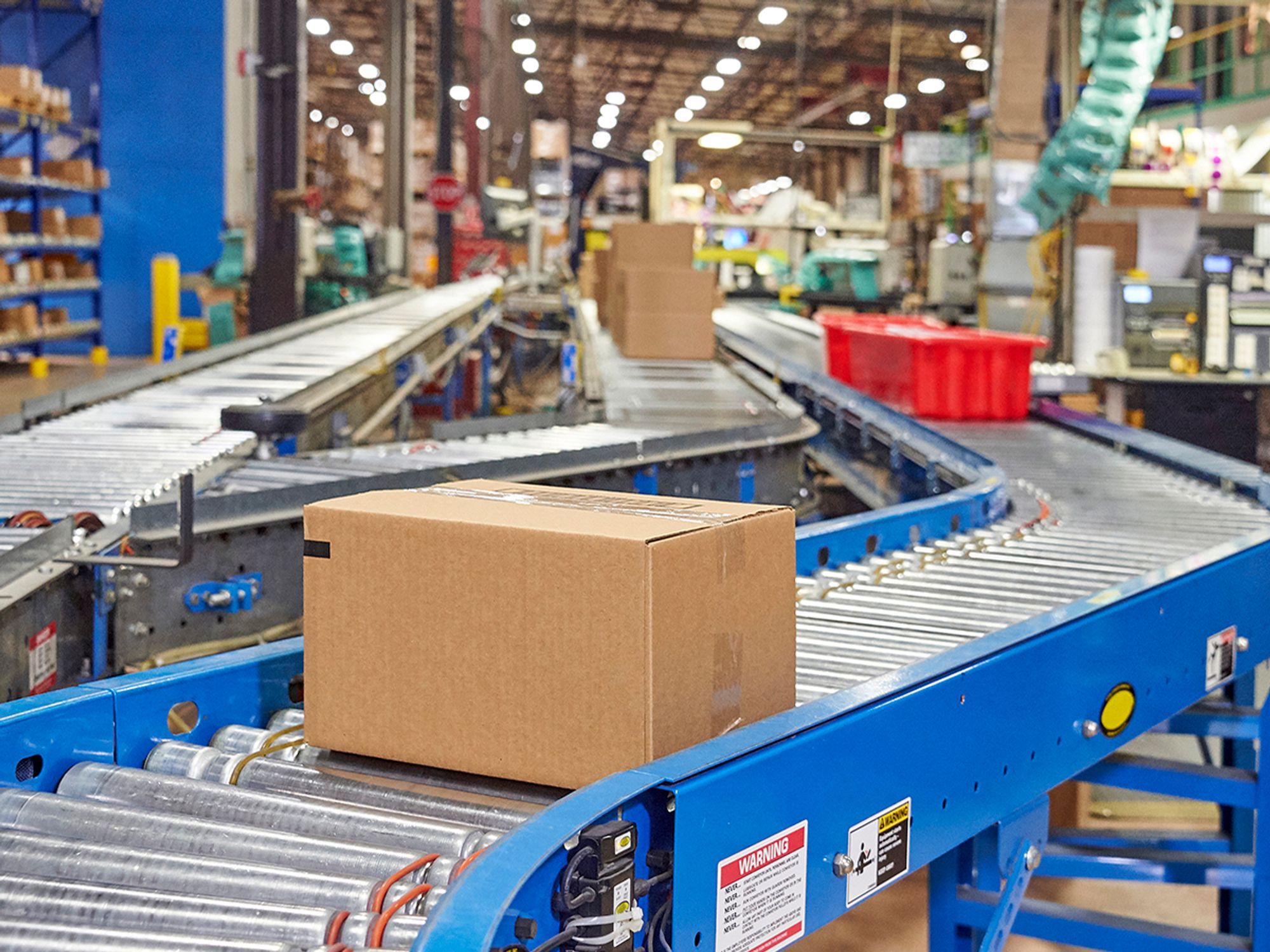What are the safeguarding requirements for conveyors?

- Conveyors need guarding to protect against nip points, shear points, and dangerous moving parts.
- Emergency stops, awareness devices, and safe work procedures are all important safeguarding methods for protecting against conveyor hazards.
Conveyors are used in many industries to transport materials horizontally, vertically, at an angle, and around curves. Because many conveyors have unique features and uses, the hazards that conveyors pose to employees will vary depending on the material conveyed, each conveyor’s location, and each conveyor’s proximity to employees.
Conveyors eliminate or reduce manual material handling tasks, but they also present amputation hazards associated with nip points, shear points, and mechanical motion. To protect employees from conveyor hazards, the Occupational Safety and Health Administration (OSHA) requires all employers with conveyors in the workplace to implement adequate safeguarding methods.
Safeguarding requirements for conveyors
OSHA requires all employers with conveyors to:
- Evaluate each conveyor to determine which primary safeguarding methods and energy control (lockout/tagout) practices are required;
- Provide guards for all nip points, shear points, and dangerous moving parts;
- Provide an emergency stop switch or pull cord that is accessible from all operator locations;
- Install guards or pans where materials could fall off conveyors and injure workers below;
- Use prominent awareness devices, such as warning signs or lights, to alert employees to the conveyor operation where necessary;
- Allow only trained individuals to operate conveyors and only trained, authorized staff to perform servicing and maintenance work;
- Inspect the entire conveyor and immediate work area before startup to determine that actuation will not cause an employee hazard;
- Inspect and test conveyor safety mechanisms before startup, such as its alarms, emergency stops, and safeguarding methods, to ensure that all are functional;
- Forbid employees from riding on conveyors;
- Prohibit employees working with or near conveyors from wearing loose clothing or jewelry and require them to secure long hair with a net or cap; and
- Perform servicing and maintenance under an energy control program in accordance with 29 CFR 1910.147, ”The control of hazardous energy (lockout/tagout).”
- For example, instruct employees to lubricate, align, service, and maintain conveyors when the conveyor is locked or tagged out if the task would expose them to an area of the conveyor or adjacent machinery where hazardous energy exists.
(These requirements are found at 29 CFR 1910.212 or are extensions of the “General Duty Clause” at 5(a)(1) of the OSH Act of 1970. Some industry-specific OSHA standards, such as those for bakeries, also cover conveyor safety to varying degrees.)
